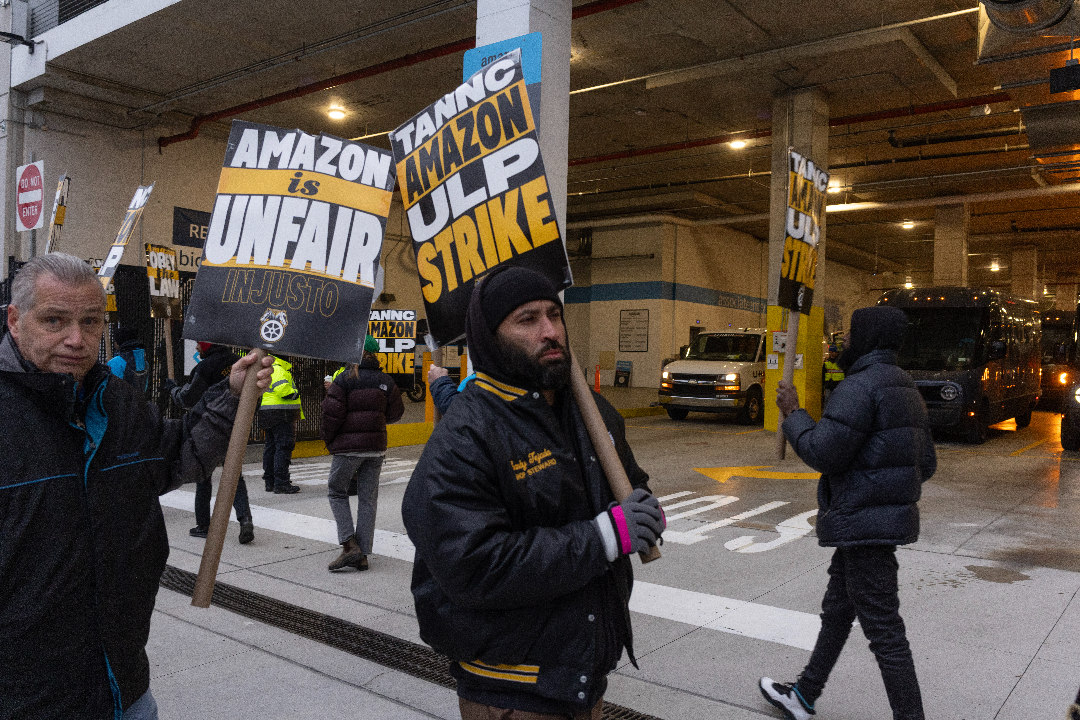An estimated 600 Amazon workers went on a short strike or participated in pickets from December 19 to Christmas Eve across eight warehouse locations, from Queens to San Francisco. The coordinated mobilization was an opening salvo to Amazon and a test of capacity for the Teamsters’ growing national network.
The union says it represents between 7,000 and 10,000 Amazon workers, either by authorization election or majority demand for recognition: a fulfillment center on Staten Island, an air hub in Southern California, a delivery station warehouse in San Francisco, and a handful of delivery contractors. It had given the company a deadline to begin bargaining with all these workers, though no one expected Amazon to actually fold over the holidays.
The Teamsters also recruited stewards, retirees, and rank-and-file United Parcel Service (UPS) workers to picket entrances to dozens of Amazon fulfillment warehouses nationwide. Picket-line extensions generally were handled by local officers and staff, and their effectiveness varied.
Amazon employs 740,000 workers across its warehouses and distribution centers, and 390,000 drivers nominally employed by 4,400 contractors, called Delivery Service Partners (DSPs); Amazon retains full control of their operations.
The holiday strike was perfectly timed for peak season at Amazon — but unfortunately also for when reporters go on vacation and newsrooms are on low staffing for the holidays, though the Teamsters succeeded in nabbing positive national headlines.
How extensive was the impact on production? In my earlier reporting, I was able to answer the question: some dips in volume, but not enough to exact a cost on Amazon’s promise of timely delivery. These walkouts did reveal new leaders and stiffen the…
Auteur: Luis Feliz Leon

